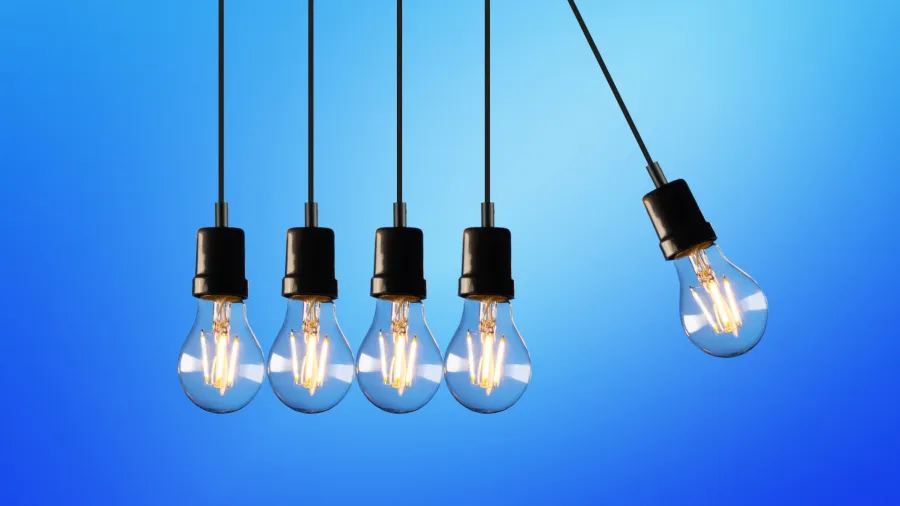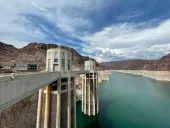
What can fix renewable energy’s intermittency?
Solar and wind power are not reliable enough to meet Southeast Asia’s issue on power demand, Enlit Asia’s invitees said.
With power demand projected to balloon to over 600 terawatt hours (TWh), Southeast Asia struggles to find the balance between pursuing its clean energy goals and keeping a sufficient power supply. Renewable energy has become more cost-effective, but to date, remains intermittent—a challenge hybrid power plants may be able to address.
Data from S&P Global showed that between 2022 and 2030 incremental demand growth is expected to go over 600TWh; which Xizhou Zhou, Vice President, Managing Director – Global Power & Renewable, S&P Global Commodity Insights, said is equivalent to powering Germany’s 550TWh power demand.
“Over the next 10 years, we need to build enough capacity that can support the fourth largest economy In the world. This is the kind of challenge that we're facing today. The question, of course, is what kind of technologies do we have available today?” Zhou said during Enlit Asia 2022.
Strategic hybrid plants
Solar and wind power are the most deployed renewable energy sources to date. Despite this, the need to significantly increase installation remains, and even then, renewables still cannot meet this power demand – at least, not on their own.
“Wind and solar must be accelerated and must be strategically deployed with gas generation and other sources of power generation. We have to couple renewables with strong grids and digital technologies that can truly take advantage of the best renewable resource we have available,” Amol Mody, President, Services, GE Gas Power, Asia, said. He added this could also mean strategic hybrid plants that will deploy renewables with various kinds of energy storage.
At least in the short- and medium-term, Boon Hean Gan, CEO, Singapore-based Leader Energy, said Southeast Asia needs to rely on thermal power, such as coal and gas, as the region awaits for renewable power supply to firm up and battery storage to become cost-competitive.
“We still need thermal power as a baseload. You cannot just simply take away and remove all those coal and gas immediately because the technology for renewable energy, whether solar or wind, is still not there,” Gan told Asian Power on the sidelines of the conference.
Gan emphasised this will be in the short-term as he sees technology that will boost companies’ transition to cleaner sources continue to emerge. He cited amongst others initiatives to switch to hydrogen in running gas turbines, instead of liquefied natural gas (LNG), and to burning agricultural biomass waste, instead of coal.
Likewise, Frank Thiel, Managing Director, Quezon Power (Philippines), Limited Co., raised the need for flexible power sources that could supply grids quickly when solar or wind power is out.
He added this becomes a challenge to grid operators tasked to provide flexible and reliable power at affordable prices, whilst facing increasing fuel costs. This is particularly difficult for the Philippines where most power plants use old technology.
Coal pivot
Between coal and gas, the latter is more flexible and faster in terms of addressing the intermittency of renewable energy. This is not to say, however, that countries are not turning their heads back to coal for energy security amidst the crisis.
Thiel has observed that countries have started to re-trace their coal phase-out plans to increase energy supply at the expense of their carbon emissions reduction targets.
“The Indonesian government already said, ‘we're not going to sacrifice security for emissions’,” Thiel also told Asian Power. “China's building. India said the same thing–we're not going to sacrifice energy security or reliability.”
The Indonesian government in September issued a regulation that exempts projects that already form part of the country’s 2021-2030 Electricity Supply Business Plan (RUPTL) target from the ban on the construction of new coal-fired power plants. Meanwhile, it was reported that India eyes adding about 56 gigawatts of coal capacity as it seeks to secure reliable power to meet demand in the market.
In the case of the Philippines, Thiel said the Philippine government is already considering the reversal of the ban on new coal-fired power plants. This is about the moratorium issued in 2020 as the country looks to expand the use of renewables.
“The Philippine government is not announcing anything yet, but I’m sure they’re thinking about it at this point because they have no choice,” he said.
Should countries pivot to coal, the next question developers face is the issue of funding now that financial institutions have stalled funding coal-fired power plants and moved to incentivise green projects. Thiel, however, said that at least in the Philippines, it is likely that lending institutions would reverse their positions.
“We saw an interesting statement recently from a bank already kind of positioning themselves to go in that direction. At least for local banks in the Philippines, if the moratorium were to be lifted, the banks will line up,” he said.
“With local Filipino banks, their statements are always kind of lining up, that if there is a reversal, they’re going to be there.” He noted however that international banks might remain firm over their decision to deviate from funding new coal-fired power plant projects.
Leader Energy CEO Gan, however, said that aside from funding, developers will also need to secure an engineering, procurement, and construction contract, and supplier of equipment necessary for coal-fired power plants; yet even if coal developers manage to check all of these boxes, Gan said it is unlikely that they can find an insurance company that will insure the project.
Outside coal and gas, Southeast Asia could also consider nuclear as an alternative, provided it is deployed strategically in the right location and with the appropriate safeguards. Provincial Electricity Authority Thailand Assistant Governor Pongsakorn Yuthagovit noted that whilst nuclear power can help in achieving carbon neutrality, there is still caution in terms of adding it to the power mix.
“Nuclear power is possible, but we are still afraid of the Fukushima case. Are they safe enough to install?” he said. “If we can use nuclear power, we can achieve carbon neutrality, but everything needs to develop. Maybe in the next 10 or 20 years, if we find new [nuclear] technologies.”



















 Advertise
Advertise






